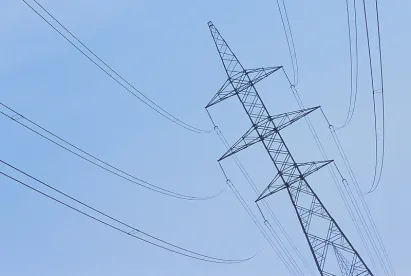The new plan builds on efforts to improve the response to attacks and disasters but recognizes that the needed investments may require regulatory changes to ensure cost recovery by utilities.
The White House has released the National Electric Grid Security and Resilience Action Plan, with dozens of directives to federal agencies to take steps to enhance the resilience of the electric grid against cyber threats, physical attacks, and natural disasters. Many of the directives build on existing initiatives scattered throughout the federal government, which the action plan gathers into a single document to provide a more focused and organized approach to the protection of the country’s power grid. Notably, the action plan realizes that many of these directives can only be achieved with the participation of public utilities and that cost recovery of investments for grid resiliency is essential if the federal government expects significant private investment to address system vulnerabilities.
The action plan is structured around three strategic goals:
1. Protect Today’s Electric Grid and Enhance Preparedness
First, the plan calls for improvements to efforts in grid resiliency through enhanced information sharing about threats and vulnerabilities, strengthening the defenses of the system and introducing measures to reduce identified risks, improving the ability to investigate and respond to threats, and enhancing the system’s performance when faced with disruptions. To this end, the plan requires
-
better information sharing so that utilities can develop more timely responses to threats;
-
improved coordination with law enforcement to identify and protect against attacks and to investigate and prosecute attackers;
-
more complete assessments of the threats to the grid that pose a greater risk of major events and the development of plans to mitigate those risks;
-
greater alignment of financial investments with security goals; and
-
new understanding of how critical systems depend on the availability of a fully functioning electric system.
2. Manage Contingencies and Enhancement Response and Recovery Efforts
Second, the plan directs federal agencies to enhance the electric system’s ability to manage and respond to contingencies such as physical threats, cyber attacks, and natural hazards. To accomplish this, it requires
-
improvements in the ability to respond to emergencies through the development of coordinated formal response plans and the situational awareness to implement those plans;
-
development of mutual assistance agreements among utilities that can be triggered by significant cyber disruptions;
-
identification of supply-chain dependencies that can affect resiliency and the ability to mitigate those weaknesses, such as through access to spare critical power transformers; and
-
methods for building a stronger system when recovery and reconstruction is needed so that the rebuilt system is more resilient.
3. Build a More Secure and Resilient Future Electric Grid
Third, the plan contains steps to ensure that the future transmission system is less vulnerable to the risks that the electric grid faces today. These steps include
-
creating assessments to identify evolving threats to the grid so that they are identified more proactively and the system can be designed to protect against those vulnerabilities and learn from past experience;
-
developing new electric grid models and infrastructure that provide better resilience, such as improved physical equipment, new electric grid infrastructure approaches (e.g., through microgrids and distributed generation), and improved power system modeling;
-
improving the manner in which regulated cost recovery for the electric industry encourages investment in resiliency;
-
researching the electric industry’s ability to address climate change risks; and
-
standardizing the training that utility workforces receive to ensure they are knowledgeable about emerging threats.
Much of the plan is nonpartisan and uncontroversial, building on existing but disparate efforts throughout several layers of government and involving various public-private partnership initiatives. The nonpartisanship suggests that the directives are likely to remain in place despite the coming change in administration.
However, the most crucial takeaway for the utility industry is that the federal government has started to recognize that current rate regulation of electric utilities does not properly encourage grid resilience. The action plan recognizes that regulatory changes may be necessary to incentivize utilities to make investments to enhance the resilience of the power system, including greater assurance on cost recovery. Indeed, some of the action items in the plan include working with federal and state rate regulators to develop approaches for “include[ing] security and resilience considerations into cost recovery criteria.”
To the extent that public utilities are part of the effort to implement the action plan and achieve its objectives, those measures will be expensive in some cases. Certainty in how much of the expenditures can be recovered in rates will undoubtedly increase participation in these efforts.



 />i
/>i


